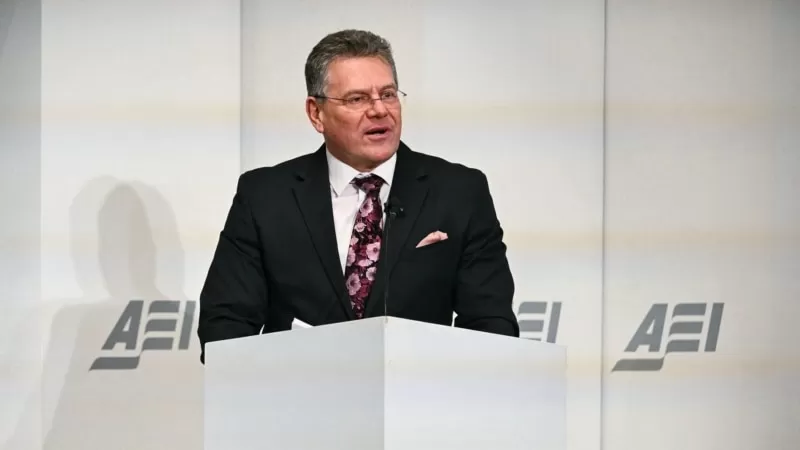In a four-hour meeting with top Trump administration officials, European Union Commissioner for Trade and Economic Security, Maros Sefcovic, stressed the importance of active engagement and fairness in trade in hopes of avoiding a potential trade conflict.
Sefcovic met with Commerce Secretary Howard Lutnick, White House National Economic Council Director Kevin Hassett, and President Donald Trump’s nominee for U.S. Trade Representative, Jamieson Greer, on Wednesday. The main objective, as presented by the American partners, was reciprocity, according to Sefcovic in a Thursday briefing with reporters.
The decades-long partnership between the U.S. and Europe has been thrown into turmoil by Trump’s pledge to impose higher taxes on imports from Europe, claiming it would match the tariffs faced by American products. However, Trump’s plan for fair tariffs also includes the value-added tax (VAT) charged in Europe, which could significantly increase import taxes and potentially trigger a broader trade conflict if the EU retaliates. This could lead to an economic slowdown and higher inflation, creating financial challenges for millions of families and potentially hurting Trump’s political support in the 2024 election, where voters specifically wanted him to lower price pressures.
In addition to the steel and aluminum tariffs already imposed by the U.S., Trump has proposed separate sectoral tariffs on autos, pharmaceutical drugs, and computer chips. He has also threatened tariffs on Mexico and Canada over his claims that more should be done to address illegal immigration and drug smuggling. However, he has suspended these tariffs for 30 days for ongoing talks, with the potential for them to begin in March.
During a White House news briefing on Thursday, Hassett stated that he and Lutnick had talks with a Mexican delegation about resolving these issues. “We want trade to be fair,” he said.
In his conversation with White House officials, Sefcovic tried to equate the VAT to a sales tax, as it is paid by the final consumer. However, he acknowledged that the issue had not been resolved. He also discussed the issue of China’s industrial overcapacity, particularly in steel, and emphasized the need for the U.S. and EU to work together to address this problem instead of targeting each other.
Sefcovic stressed that the meeting ended with a focus on finding ways to “generate positive momentum.” He expressed the EU’s desire to “see where we can move first and fast” in order to avoid the pain of measures and countermeasures. He also highlighted the importance of establishing a personal relationship with his U.S. counterparts.
“I am glad that we had such an intense meeting,” Sefcovic said. “Now, I think we will both be thinking about how to keep the momentum going and hopefully avoid the pain.”
In conclusion, Sefcovic’s meeting with top Trump administration officials was a step towards finding a solution to potential trade conflicts between the U.S. and Europe. By emphasizing the importance of active engagement and fairness in trade, Sefcovic hopes to avoid any further escalation and instead, focus on finding ways to generate positive momentum. It is crucial for both sides to work together and establish a personal relationship in order to find a mutually beneficial solution. Let us hope that this meeting will lead to a positive outcome and strengthen the partnership between the U.S. and Europe.

